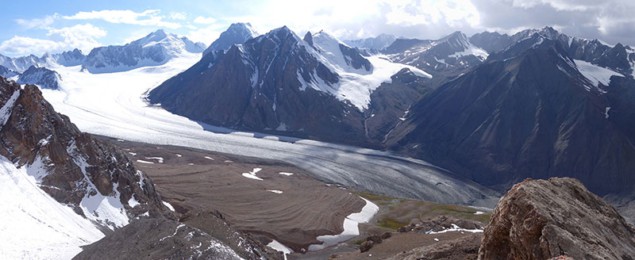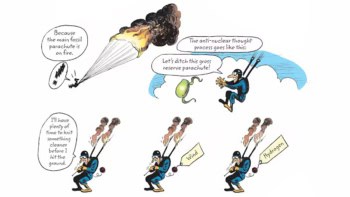
The distribution of freshwater runoff from glaciers throughout the year may change as the climate warms, predicts a study in Nature Climate Change. During this century, for around half the 56 glaciers examined, annual runoff is expected to increase to a peak then reduce, whilst annual runoff for the remainder seems already to have peaked and is predicted to continue to fall. What’s more, the proportion of the run-off taking place in the melt-season looks set to decrease in more than a third of the basins.
Matthias Huss of the ETH Zürich and the University of Fribourg, Switzerland, together with Regine Hock from the University of Alaska Fairbanks, US, simulated the development of glaciers under climate change for all 56 large drainage basins containing glaciers outside Antarctica and Greenland.
The researchers’ predictions indicate that annual freshwater runoff from glaciers will increase with rising global temperatures, before falling again as the glacier shrinks. Ultimately, each glacier will either disappear or settle at a smaller size but with the same annual runoff as before, having reached a new size equilibrium. Melt-water will no longer contribute to overall runoff as an equivalent amount of water will accumulate in the glacier in winter. If other factors, such as precipitation, have remained unchanged over time then total runoff will return to its initial level.
This annual pattern contrasts with the runoff taking place in summer, during the melt-season. The pattern is similar initially; projected runoff increases with global temperature and reaches a peak. It then falls, stabilizing below its pre-warming level. This is because some of the melt-season runoff represents the melting of a percentage of the glacier itself. As the glacier has reduced in size, this volume is smaller. The annual runoff has returned to its original level thanks to the glacier’s new size equilibrium, yet melt-season runoff has fallen, so a greater proportion of runoff must occur outside the melt-season. This probably results from winter rains and snow, as the glacier is not contributing melt-water and has little effect on winter runoff.
Although there was substantial variation between basins, the researchers came to some key conclusions. More than one third of the basins are set to experience an overall reduction in runoff greater than 10% during at least part of the melt-season by the end of the century, they found. It is important to note that these glacier-containing basins house almost one-third of the global human population. The disruption of glacial runoff could have serious effects on these communities, as well as countless natural habitats downstream from melting glaciers.
Huss and Hock used the Global Glacier Evolution Model (GloGEM) to predict glacier size changes and runoff. The researchers based their calculations on three different greenhouse gas concentration predictions developed by the Intergovernmental Panel on Climate Change (IPCC). RCP2.6 is the closest to the targets set out in the 2015 Paris Climate Agreement, while RCP4.5 and RCP8.5 both predict higher emissions and later peaks in atmospheric greenhouse gas concentration. The simulations ran until the year 2100.



